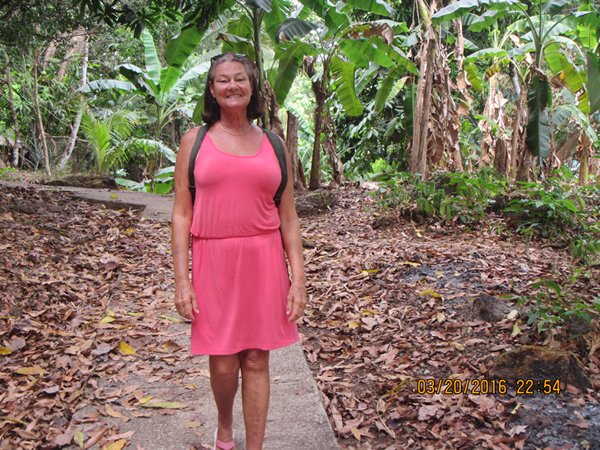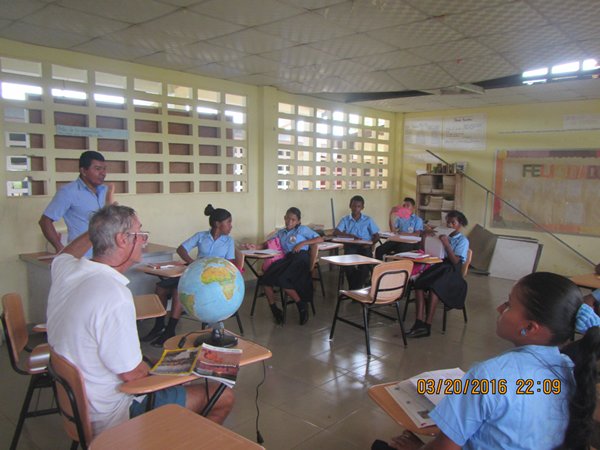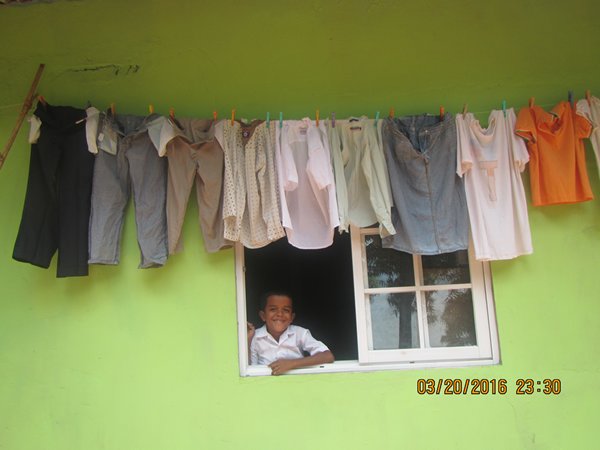A World Of Their Own. Bahia Honda, Panama.

A World of Their Own
Nestled into the Pacific coastline of Panama, just short of the Costa Rican border, lies the hidden world of Bahia Honda (Deep Bay). As Peregrina glided silently into the bay, the long rays of the afternoon sun were slipping behind the highest peaks. Long shadows of the mountain contours were cast upon the smooth waters as if a subtle charcoal masterpiece was being drawn.
There were no towns or lights anywhere around the borders of this enormous bay yet we had heard that a village thrived on the island, in the middle of the bay. Peregrina’s anchor splashed down about 200 meters off the village as twilight lost its last vestiges of sun and night descended languidly.
To our surprise only a few white lights began to appear around the village. The soft hum of generators could be heard next to the few houses with lights. The majority of the houses remained dark. As our eyes began to adjust to the night, we began to see candles and lanterns casting flickering faint, yellow illuminations in many homes. The loudest sound was the dogs barking as the crescent moon arose.
The island was not small nor was it large. We asked several people how many families lived their but no one was sure. Our best guess is about 120 families.

The next morning we awoke to find Peregrina anchored near to some fishing boats. We were the only visitors to the bay and had not seen another sailboat for weeks.

Fishing is the main livelihood of the island. Nestled into small coves on the island are numerous boats run by the sons of fathers whose boats lie abandoned on the shoreline.
Fishing had been very, very bad this year and it was blamed on the effects of “El Nino.”


There are no roads or cars so children growing up dream of owning their own boat. One father made a wooden outboard engine and placed it on an old boat for his son. As we passed, the child was going “varooom, varooom” mimicking the sound of his future motor.

The older kids, who visited Peregrina frequently, have dugouts. Here you can see them with canned food from Peregrina. They had never tried many of the foods we gave them. They would take the cans home and come back the next day and say “My mother thanks you. She liked it but not so much!”

Ashore, Margie shopped at the largest store. There is no point in asking if they have specific things. The only items for sale are right in front of you on four or five shelves.

Walking around the island was easy since the government of Panama had built a series of wonderful concrete walkways. As soon as they were built all the mothers wanted strollers.

On our
worldwide voyages, Peregrina has visited 38 countries. In almost every country
the proliferation of plastic bottles, plastic bags and non-biodegradable
garbage is polluting rural populations and the sea. It has been one of the more
depressing, eye opening memories of our trip. But, every once in a while, a
small society can be mightly influenced by a single person or small group of
community leaders. This is true in Isla Bahia Honda. There is almost no
garbage…anywhere.
Look at the ground next to Margie. The blackened areas are where fires were started and garbage burned. There are thousands of fire blackened site and garbage is always burning at multiple locations. Each family is responsible for burning their own garbage.


When we travel on Peregrina we try to stop at orphanages and schools. Here at Isla Bahia Honda we sought out the head teacher and made an appointment to visit his school. I speak Spanish and it is a pleasure to meet with the young people and learn about their lives and answer questions they have about the world we have visited.
In this school, I sat with the older kids and used a globe to talk about the world. We also bring National Geographic magazines which have great pictures.

These kids live on an island. On the mainland of Panama, just a couple of kilometers away there are no roads. The only mode of travel to the outside world is by boat, going out into the Pacific Ocean. Most of the kids could not find Panama on the globe nor could they find China, Australia or Africa. For them, the outside world exists as stories, pictures or perhaps a video they have seen. They have no real idea of global politics, religious strife or racial tension. They live in a world of their own. The young girls want boyfriends and the boys want girlfriends.
One
interesting aspect of the influence of modern technology is that there is a
signal that comes to a small antennae which operates the single solar powered pay
phone on the island. This is the only way to call off island.

And yet,
lounging in a great circle around the antennae, were teens with smart phones. It
turns out that the signal reaching the island, while not strong enough to
access the internet nor make cell phone calls, is strong enough to let people
use the messaging system “What’s App.”
The young kids messaged their boyfriend or girlfriend constantly. In some cases, the kids were messaging other young Spanish speaking people far away from Bahia Honda and sometimes outside of Panama. Most of these kids would never meet their distant “Whats App” boyfriends or girlfriends. At some point, the girls would get pregnant and then marry the local boy.
And thus life would begin anew. The young family would live in a small house, the women would tend to the home while their children would look out the window everyday past the drying laundry.

The husband would go out fishing, as his father had done before him, and life would continue in Bahia Honda, in a world of their own.
--